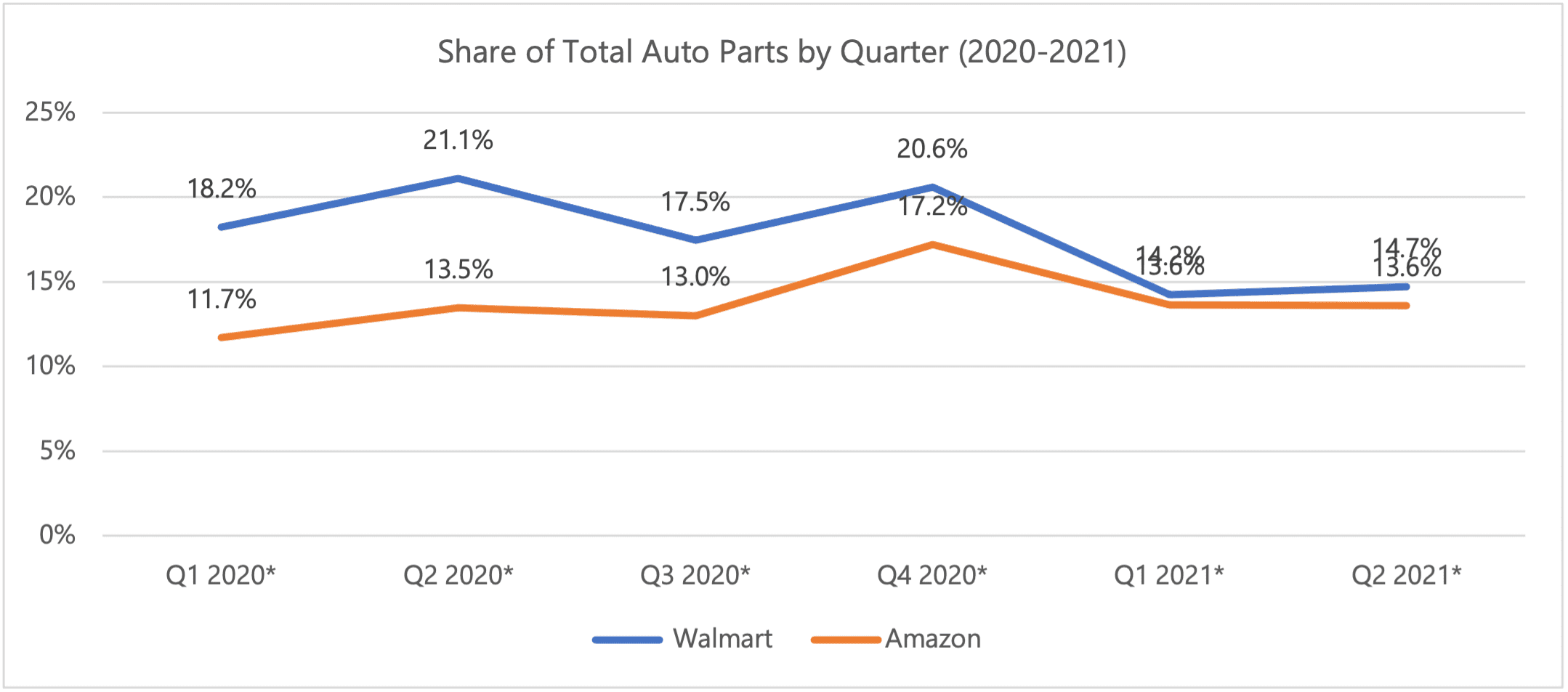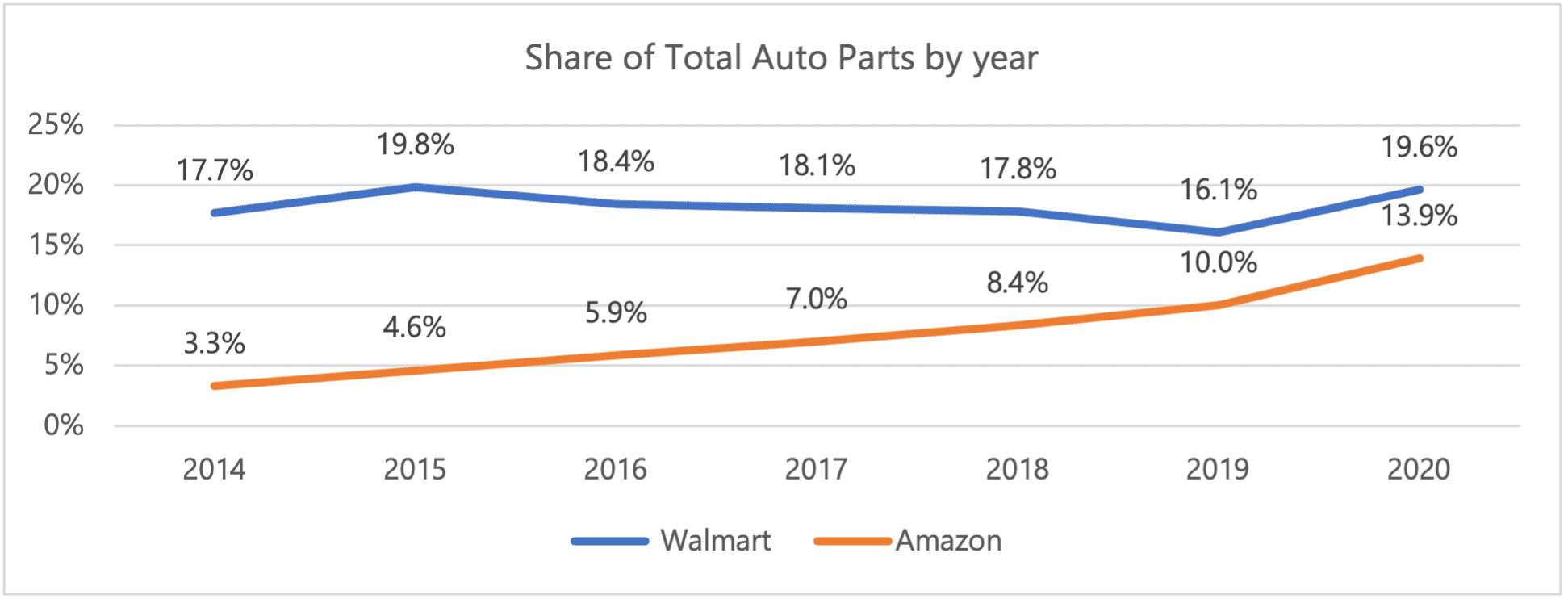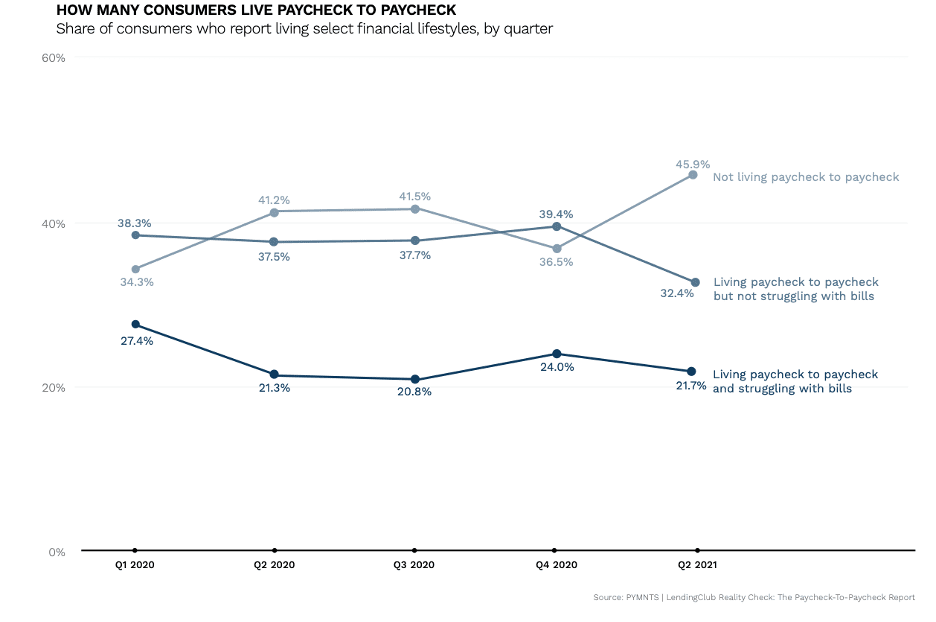Walmart’s Auto Parts Dominance Over Amazon All But Ended

In just 12 months, Walmart has seen a 7 percentage point market share lead in auto parts evaporate versus rival Amazon, which for the second consecutive quarter is within 1 percentage point of the long-time segment leader.
Amazon held onto over 13% of consumers’ auto parts purchases, about the same share it had in the second quarter of 2020. Walmart, on the other hand, sold nearly 15% of consumers’ auto parts last quarter, though that’s over six percentage points lower than the same period last year.

Source: PYMNTS data
Part of Walmart’s continued strength in the category — one of the last categories that it holds above Amazon — likely comes from its 2,500 U.S. auto care centers, which provide consumers with automotive services while they shop. The fact that Amazon has managed to stay neck-and-neck with the box store giant as the pandemic wanes, though, may be a sign that this is yet another place that Walmart is destined to lose. After the pandemic accelerated eCommerce sales across the board, it could be that consumers have found the convenience of buying auto parts online too hard to part with.
For example, PYMNTS’ “How We Shop” research, conducted in collaboration with Carat from Fiserv, found that 9% of millennials and 8% of bridge millennials report making more buy now, get later (BNGL) auto parts purchases now than they did prior to March 2020. Ninety-one percent of consumers say they regularly make BNGL purchases on Amazon.
Read: 5,000 ‘Need It Now’ Consumers Tell PYMNTS What They Expect, Value Most From Retailers
Also concerning for Walmart is Amazon’s steadily rising share of the auto parts category in the last several years. In 2017, Amazon saw just 7% of overall auto part sales compared to Walmart’s 18% share. Just two years later, Walmart’s share had fallen to 16% while Amazon’s had risen to 10%; amid the pandemic, Walmart’s share rose about 3 percentage points while Amazon rose 4.

Source: PYMNTS data
PYMNTS’ proprietary data are derived from a gross market value standpoint, which tracks the full value of everything sold. For example, if Amazon sold a $50 set of knives but only booked $5 in revenue, assuming it charged the merchant a typical 10% referral fee, PYMNTS’ use of the former metric provides a more holistic view of where consumers are spending.
Competitive Headwinds
Both Amazon and Walmart will likely see continued pressure in the coming months, though, from pure auto parts retailers that have spent the last 18 months bolstering their eCommerce operations and are now reaping the benefits. Advance Auto Parts, for example, saw a nearly 6% rise in net sales in the second quarter, while AutoZone logged a 29% year-over-year increase. O’Reilly Auto Parts also reported a nearly 10% increase in comparable sales for the quarter, on top of a 16% increase in 2020.
See: Heavy Traffic Is Good News For Auto Parts Retailers
Gregory Johnson, CEO and co-president of O’Reilly, said last month on a conference call that the second quarter “greatly surpassed our expectations.”
“We continue to maximize the benefits from the robust broad-based industry trends we’ve experienced over the last several quarters, coupled with a favorable weather environment and the benefits of government stimulus,” he said.
O’Reilly Auto Parts Chief Financial Officer Thomas McFall also told investor and analysts that the category is likely seeing increased demand as consumers worry about budgets and high prices for new and used cars amid the global chip shortage.
“We continue to see an environment where people are somewhat concerned about their economics and are taking on more challenging jobs by themselves,” McFall said.
PYMNTS research, conducted in collaboration with LendingClub, found that over 54% of consumers are living paycheck to paycheck, with nearly 22% struggling to pay bills. Additionally, of the 71 million millennials in the U.S., 43 million live paycheck to paycheck.

Source: PYMNTS data
Read more: 43 Million US Millennials Report Living Paycheck to Paycheck
Johnson noted, though, that as inflation remains elevated and consumers continue to be strapped for cash, auto parts may suffer in the coming months.
“Historically, we’ve seen when prices increase, when gas prices increase, things like that, the economically-challenged consumer has less discretionary cash to spend,” he said. “Sometimes they will defer maintenance and sometimes they’ll trade down the value spectrum.”

